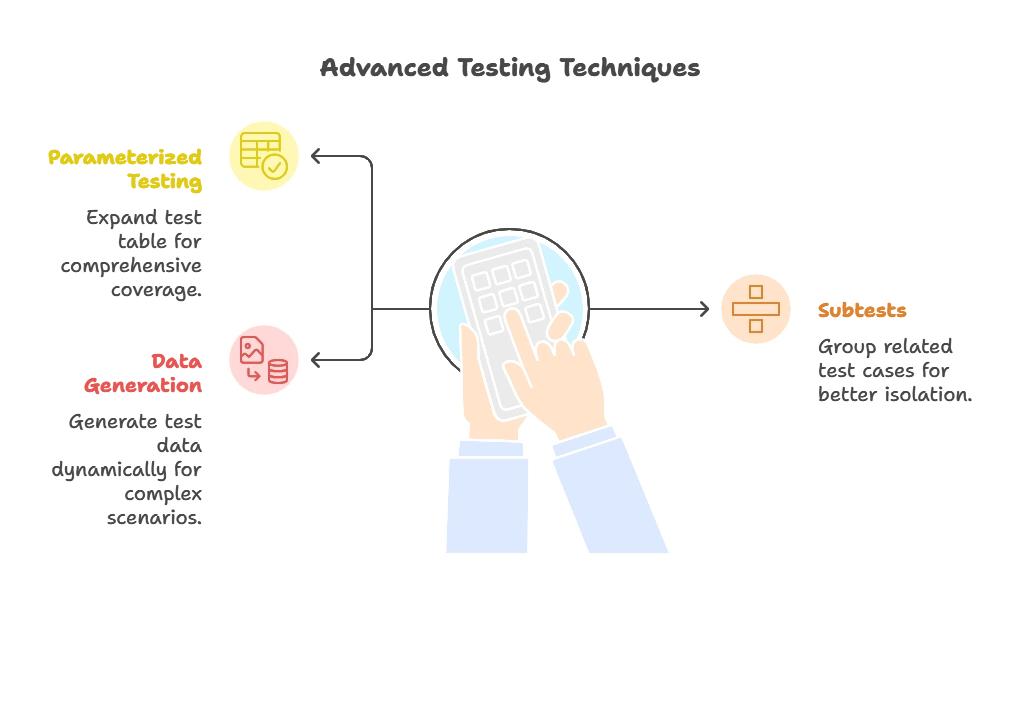Table-Driven Testing
Table-driven testing is a testing technique where test cases are defined in a table-like structure. This approach allows for concise and organized testing of multiple scenarios, making it easier to maintain and understand test suites.
Table-Driven Tests in Go: Comprehensive Testing Made Easy
Table-driven tests in Go provide a powerful mechanism for testing functions with multiple inputs and expected outputs. This technique allows us to define a table of test cases, iterate over them, and execute the same test logic for each case. Let’s dive into this testing approach from basic concepts to advanced techniques, with examples and detailed explanations.
Basic Concepts
Test Cases Table: We create a table where each row represents a test case. Each row consists of inputs to the function under test and the expected output.
Iterating Over Test Cases: We iterate over the test cases table and execute the test logic for each case. This eliminates redundancy and maintains a clean test code structure.
Test Logic Execution: For each test case, we invoke the function under test with the provided inputs and compare the result with the expected output.
Let’s consider a simple function Add that adds two integers.
func Add(a, b int) int {
return a + b
}
We can test this function using a table-driven approach as follows:
import (
"fmt"
"testing"
)
func TestAdd(t *testing.T) {
testCases := []struct {
a, b int
expected int
}{
{1, 2, 3}, // Test case 1
{0, 0, 0}, // Test case 2
{-1, 1, 0}, // Test case 3
{5, -2, 3}, // Test case 4
}
for _, tc := range testCases {
result := Add(tc.a, tc.b)
if result != tc.expected {
t.Errorf("Add(%d,%d) = %d; want %d", tc.a, tc.b, result, tc.expected)
}
}
}
In this example:
- We define a slice of
structto hold our test cases, with eachstructrepresenting an input-output pair. - We iterate over each test case using a loop and execute the
Addfunction with the input values. - We use
t.Errorfto report any discrepancies between the actual and expected results.
Advanced Techniques:
Parameterized Testing: Expand the test table to cover various input scenarios, including edge cases and boundary conditions, to achieve comprehensive test coverage.
Subtests: Utilize subtests within table-driven tests to group related test cases, provide better isolation, and improve reporting. This helps in identifying failing test cases more accurately.
Data Generation: Generate test data dynamically or through external sources to handle large datasets and complex scenarios effectively. This ensures thorough testing of the function under various conditions.

Table-driven testing is a powerful technique for writing clear, concise, and maintainable test cases in Go. By organizing test cases in a structured format, developers can easily understand the test coverage and quickly identify failures. With the ability to scale from simple to complex scenarios, table-driven tests promote robust testing practices and contribute to the overall quality and reliability of Go applications. Happy coding !❤️
